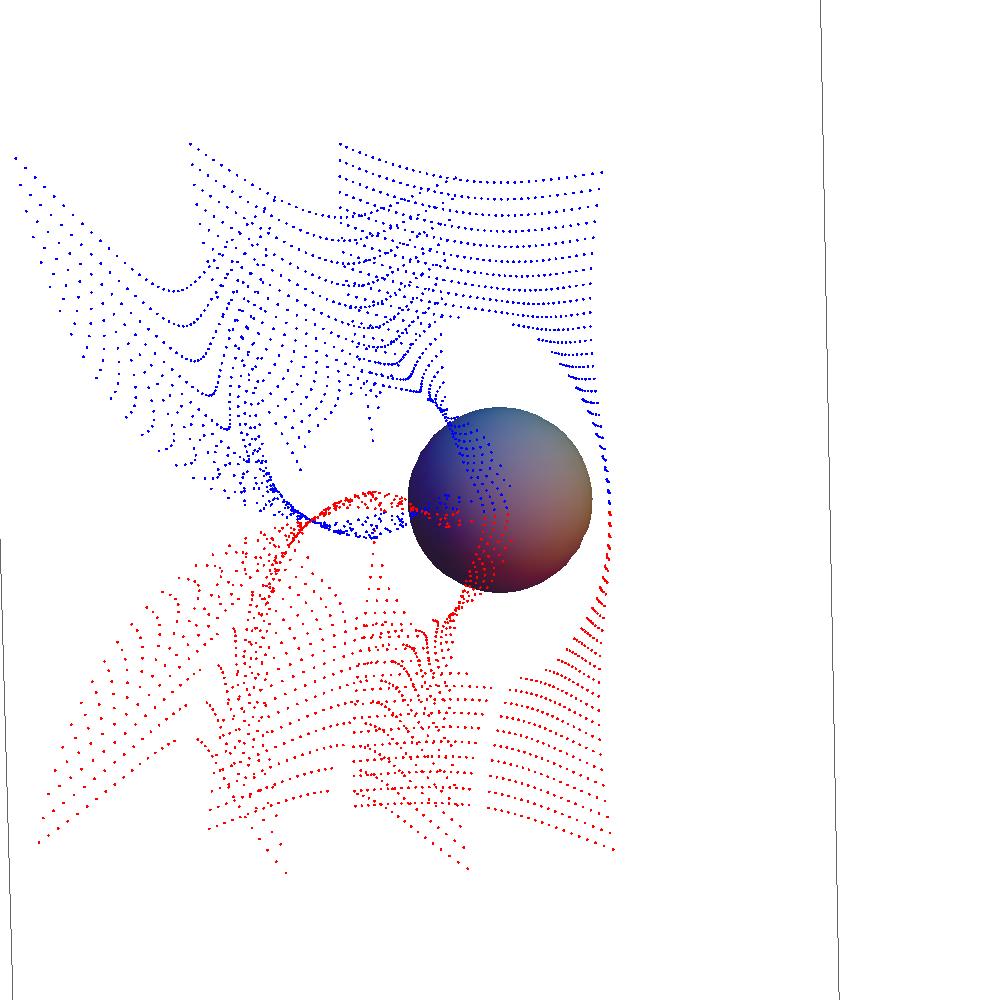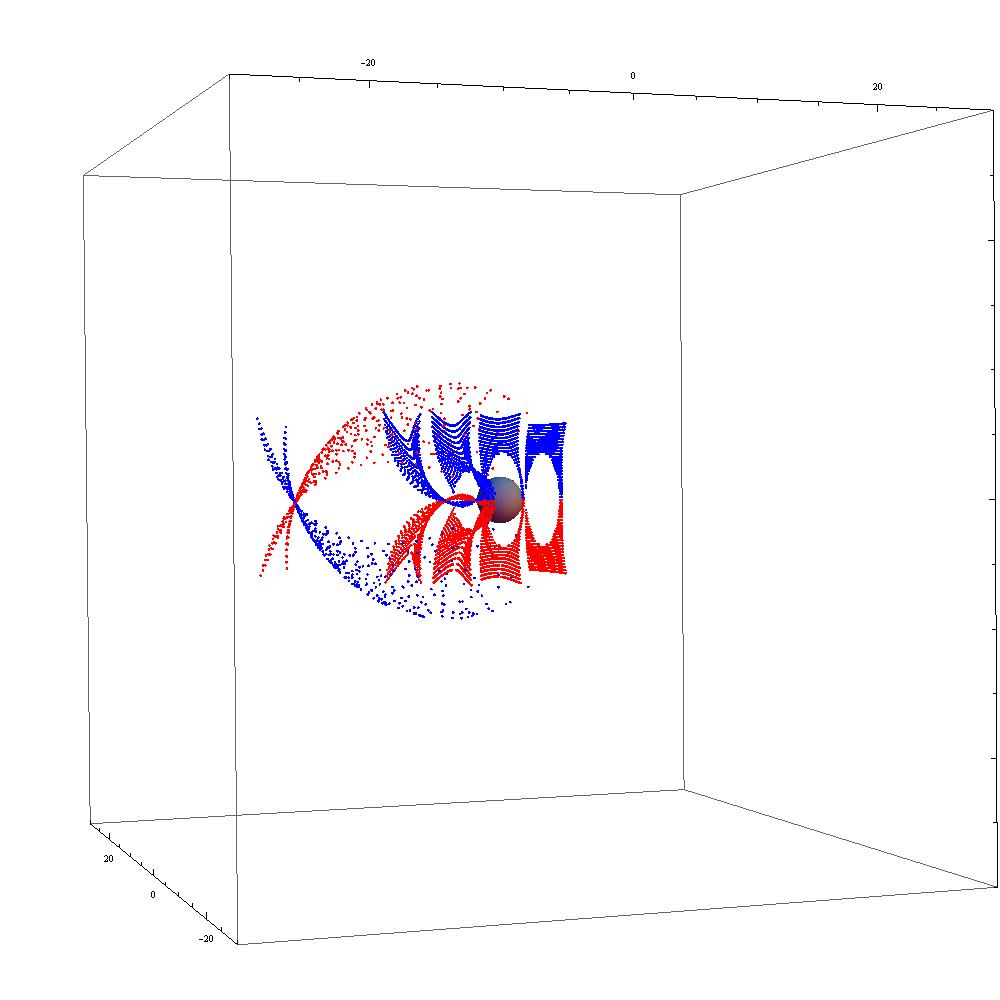
Three wave-fronts advancing
from right to left
passing the even horizon of a Kerr black hole
with a = 0.25 and m=1. The wave-fronts are those
emitted from a point source at r = 20 in the
equitorial plane. The circular blank region in the
wave-front is omitted data that falls into the black
hole.
These wave-fronts are
constant t wave-fronts in
usual Boyer-Lindquist coordinates.
To right:
Same wave-front progressions as above at later times.
Wave-front
data was generated using an adaptive
stepsize Runge-Kutta-Fehlberg 4-5 methods based
loosely on the presentation in NR of Press et al.
We integrate
the individual light rays emanating from
a point and place data into level t wave-front files. The
wave-fronts are then produced graphically using the ListPointPlot3D
command from Mathematica 7.
